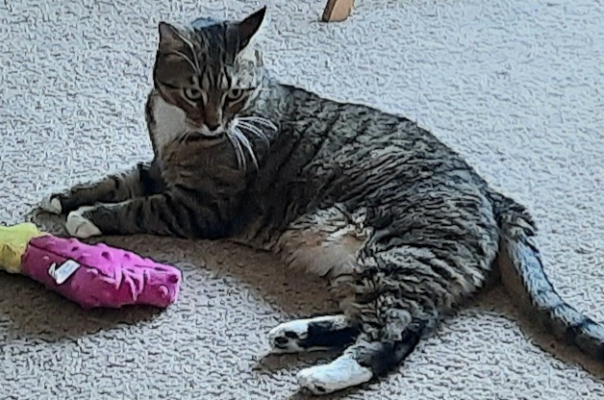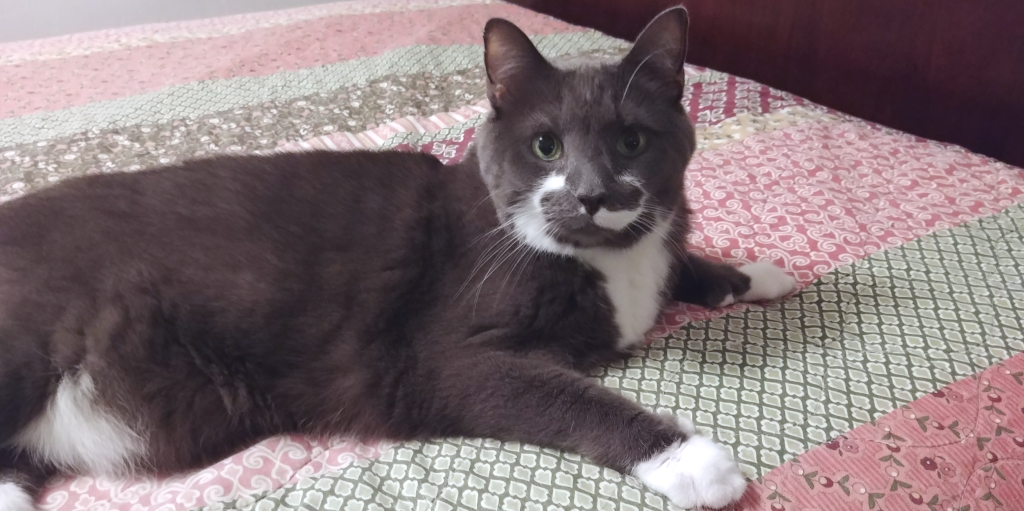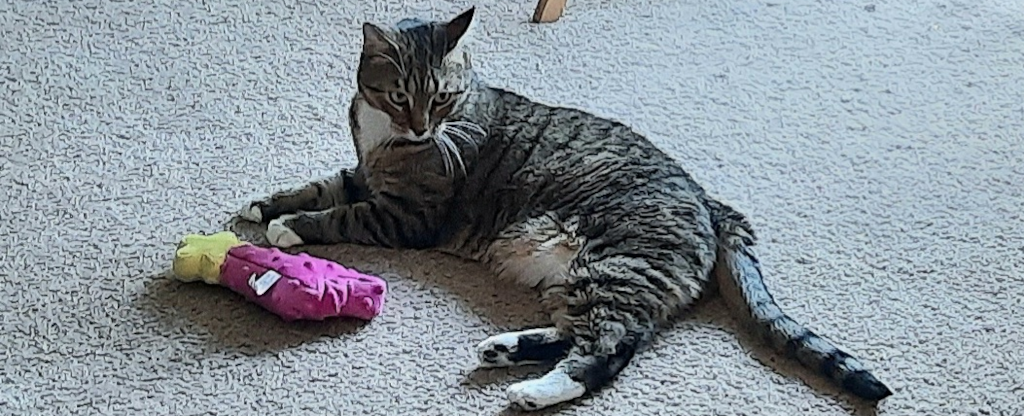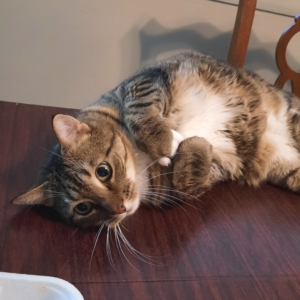 Remember that rambunctious kitten who scaled your curtains, pounced on your toes at dawn, and somehow managed to be everywhere at once? The same furry friend who could spend hours battling a crumpled paper ball may now be choosing longer naps in sunbeams over acrobatic play.
Remember that rambunctious kitten who scaled your curtains, pounced on your toes at dawn, and somehow managed to be everywhere at once? The same furry friend who could spend hours battling a crumpled paper ball may now be choosing longer naps in sunbeams over acrobatic play.
This transition happens so gradually that many cat owners barely notice until their companions are well into their senior years. Yet understanding when your cat is entering this new life stage—and how to support them through it—can significantly enhance their comfort, health, and happiness in their golden years.
The Subtle Signs of Aging
Cats typically begin their senior journey around 11 years of age, though larger breeds may show signs earlier and smaller cats somewhat later. Unlike the dramatic gray muzzles or cloudy eyes that signal aging in dogs, cats often maintain their youthful appearance while subtly changing their behaviors and habits.
One of the earliest indicators is a shift in energy patterns. The cat who once tore through your home in random bursts of energy—the famous “midnight zoomies”—may now channel that energy into shorter, more deliberate play sessions. You might notice your cat still engages with favorite toys but perhaps bats at them from a comfortable position rather than executing elaborate leaps. These changes don’t mean your cat is unwell; rather, they’re conserving energy more efficiently.
Sleep patterns also evolve in senior cats. While all cats are champion nappers (spending 16-20 hours daily resting or sleeping throughout their lives), senior cats often sleep more deeply and may be less easily roused by typical household sounds. You might observe your aging companion seeking warmer sleeping spots—perhaps abandoning that cool tile floor in favor of heated beds, sunny windowsills, or even your laptop. This preference stems from a senior cat’s decreased ability to regulate body temperature efficiently, making warmth particularly comforting.
Grooming habits provide another window into your cat’s aging process. The meticulous groomer who once maintained a pristine coat may develop patches of less-attended fur, particularly in hard-to-reach areas like the lower back or rear legs. This change often results from decreased flexibility rather than reduced interest in cleanliness. A cat who struggles with grooming might also develop more matted fur, dandruff, or a generally unkempt appearance requiring your gentle assistance.
 Perhaps most telling are changes in social behavior. Many cats become more openly affectionate in their senior years, seeking more physical contact and companionship than they did as independent young adults. The formerly aloof cat might now actively seek your lap or sleep beside you at night.
Perhaps most telling are changes in social behavior. Many cats become more openly affectionate in their senior years, seeking more physical contact and companionship than they did as independent young adults. The formerly aloof cat might now actively seek your lap or sleep beside you at night.
Conversely, some seniors become more selective about interaction, preferring predictable, gentle handling over boisterous play. They may also become more vocal, with more frequent or distinctive meows communicating specific needs more directly than in their younger years.
Physical Changes Worth Noting
While behavioral shifts offer subtle clues, certain physical changes warrant more immediate attention. Weight changes—in either direction—often signal the onset of age-related conditions. Weight loss, particularly when accompanied by increased appetite, might indicate hyperthyroidism, an overactive thyroid condition common in older cats. Conversely, weight gain despite stable eating habits could suggest decreased metabolism or reduced activity that requires dietary adjustments.
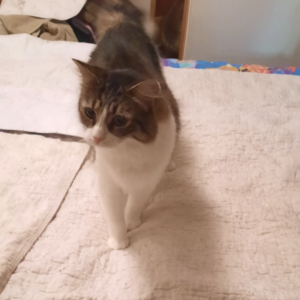 Arthritis affects more than 90% of cats over 12 years old, though many owners miss the signs because cats instinctively hide pain. Unlike dogs who might limp obviously, cats show their joint discomfort through hesitation before jumping, choosing lower surfaces, or taking stairs more carefully. You might notice your cat using furniture as stepping stones to reach higher places they previously accessed in a single bound, or spending extra time stretching their back legs after rising from rest.
Arthritis affects more than 90% of cats over 12 years old, though many owners miss the signs because cats instinctively hide pain. Unlike dogs who might limp obviously, cats show their joint discomfort through hesitation before jumping, choosing lower surfaces, or taking stairs more carefully. You might notice your cat using furniture as stepping stones to reach higher places they previously accessed in a single bound, or spending extra time stretching their back legs after rising from rest.
Vision and hearing changes often develop gradually. A senior cat may seem less responsive to sounds that once brought them running, like the treat bag rustling or the can opener whirring. Similarly, they might miss small movements that would have triggered their predatory response in younger years or seem startled when approached from certain angles. These sensory changes require simple adaptations in how you interact with your aging companion.
Health Considerations and Veterinary Care
As cats transition to senior status, their healthcare needs evolve significantly. The once-yearly veterinary visit should increase to twice-annual check-ups, allowing for earlier detection of common age-related conditions. Blood work becomes particularly important, as many senior cat conditions—including kidney disease, diabetes, and thyroid issues—show up in laboratory results before observable symptoms develop.
Kidney disease deserves special attention, affecting more than half of cats over age 15. Early signs include subtle increases in water consumption and urination, which many owners attribute to behavioral changes rather than medical issues. Regular urinalysis and blood chemistry panels can identify declining kidney function early, when dietary changes and medication can significantly slow progression.
Thyroid conditions—most commonly hyperthyroidism—affect many senior cats and produce symptoms like weight loss despite ravenous appetite, increased thirst, restlessness, and sometimes vomiting. Fortunately, several effective treatment options exist, from medication to radioactive iodine therapy, making this condition manageable when caught early.
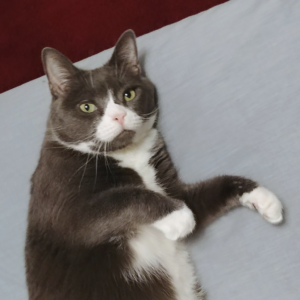 Dental disease intensifies with age and impacts overall health more significantly than many owners realize. Beyond causing pain and difficulty eating, dental infections release bacteria into the bloodstream that can damage vital organs like the heart and kidneys. Regular dental check-ups and professional cleanings become increasingly important, though these may require more careful anesthesia protocols for senior patients.
Dental disease intensifies with age and impacts overall health more significantly than many owners realize. Beyond causing pain and difficulty eating, dental infections release bacteria into the bloodstream that can damage vital organs like the heart and kidneys. Regular dental check-ups and professional cleanings become increasingly important, though these may require more careful anesthesia protocols for senior patients.
Cognitive changes affect many senior cats, with signs similar to dementia in humans. You might notice your cat becoming confused in familiar settings, vocalizing more frequently (especially at night), showing altered sleep-wake cycles, or forgetting previously learned behaviors like litter box habits. Several supportive therapies and supplements can help manage these changes when identified early.
Creating a Senior-Friendly Home
Simple environmental modifications can dramatically improve your senior cat’s quality of life. Consider these adaptations as loving accommodations rather than admissions of your cat’s limitations:
Provide easy access to essentials by placing food, water, and litter boxes on each level of your home, eliminating the need for challenging stair climbs. Litter boxes with lower sides offer easier entry for arthritic joints, while slightly higher-sided food and water dishes reduce strain on the neck during meals.
Create temperature-controlled resting areas with heated beds (either plug-in varieties or self-warming options) placed in quiet, draft-free locations. These become particularly important during colder months when seniors struggle more with temperature regulation.
Establish predictable routines that help compensate for sensory changes. Maintaining consistent furniture arrangements helps visually impaired cats navigate confidently, while regular feeding and play schedules provide security for cats experiencing cognitive changes.
Install gentle “step-ups” or ramps to favorite perches, allowing your cat to reach beloved windowsills or sleeping spots without challenging jumps. Something as simple as an ottoman placed strategically can preserve your cat’s access to cherished high places.
Consider claw-friendly surfaces on favorite paths, as senior cats often experience thicker, more brittle claws that catch in carpeting. Sisal runners or low-pile carpet squares can provide secure footing while allowing safer movement.
Nutritional Adjustments for Aging Cats
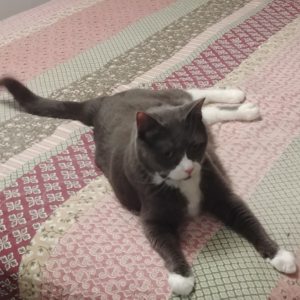 Senior cats benefit from thoughtful dietary changes that support their changing metabolism and address potential health concerns. Protein becomes more crucial as cats age, though the sources should be highly digestible to accommodate less efficient digestive systems. Many senior formulations contain adjusted phosphorus levels to support kidney function, along with omega fatty acids for joint health and cognitive support.
Senior cats benefit from thoughtful dietary changes that support their changing metabolism and address potential health concerns. Protein becomes more crucial as cats age, though the sources should be highly digestible to accommodate less efficient digestive systems. Many senior formulations contain adjusted phosphorus levels to support kidney function, along with omega fatty acids for joint health and cognitive support.
Feeding schedules might require adjustment as well. Many seniors digest their food more efficiently with smaller, more frequent meals rather than once or twice daily feeding. Warming food slightly enhances aroma—particularly beneficial for cats with diminishing sense of smell who might otherwise show decreased interest in eating.
Hydration deserves special attention in senior cats, particularly those showing early kidney changes. Many seniors benefit from wet food diets that increase moisture intake, along with strategically placed water sources. Some older cats prefer running water from pet fountains, which can encourage better drinking habits.
Embracing the Golden Years
The transition to senior cat status isn’t simply about managing decline—it’s about embracing a new phase of companionship. Many cat owners report deeper bonds with their aging companions, who often become more communicative and affectionate. The playful kitten may have captured your heart with antics and energy, but the senior cat often connects through meaningful interaction and the quiet comfort of shared space.
By recognizing the subtle signs of aging early, adapting your home environment thoughtfully, and providing appropriate preventive care, you create the conditions for a dignified, comfortable senior experience. Your once-mighty hunter may now prefer birdwatching through windows to active pursuit, but their appreciation for your adaptations shows in contented purrs and gentle companionship. The journey into feline senior years can be one of the most rewarding phases of cat ownership—a time of mutual understanding and deepened connection with your feline friend.


